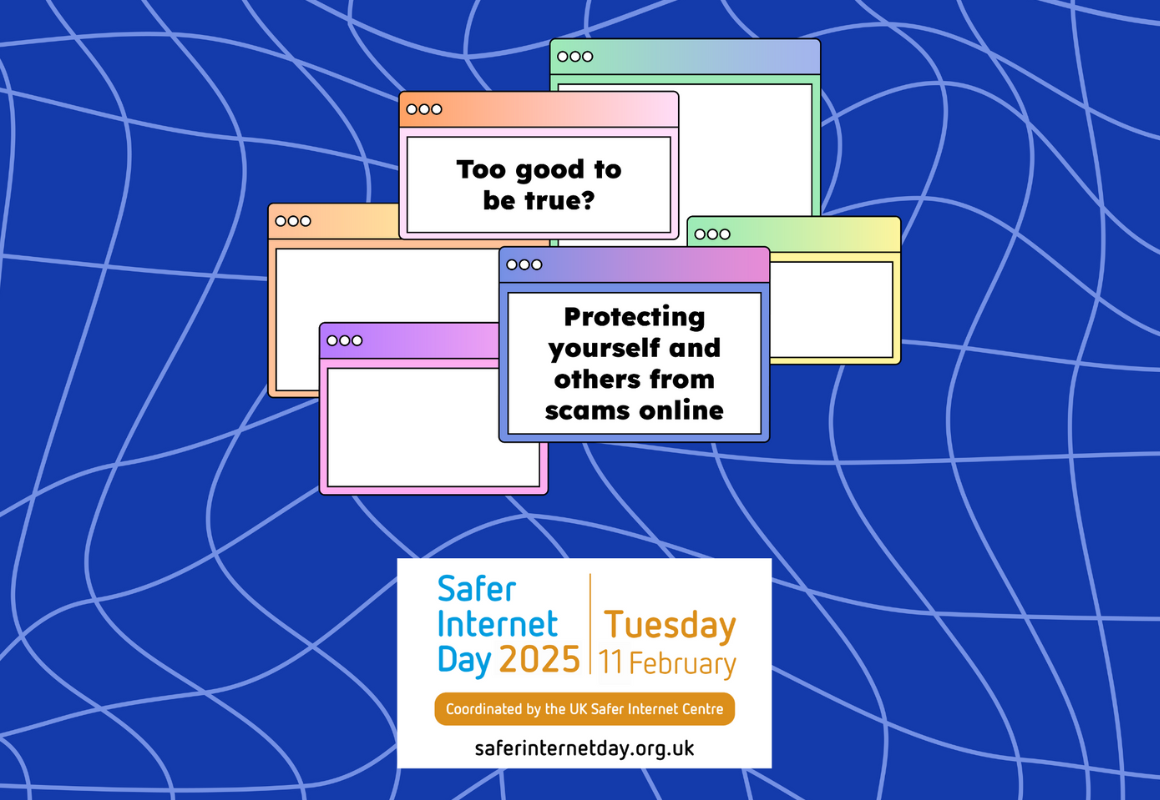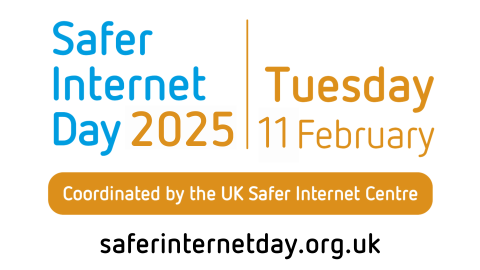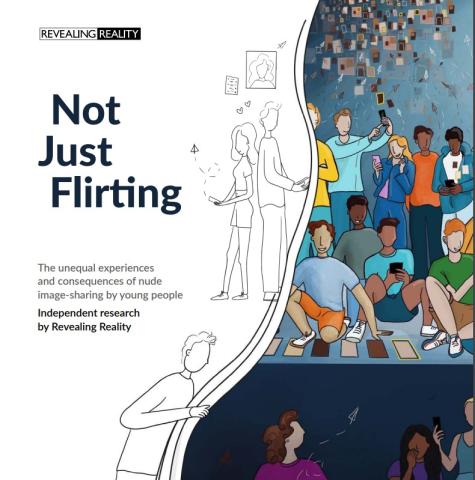

This year’s Safer Internet Day is on Tuesday 11th February. The focus is on the issue of scams online and for young people, how to protect themselves and others, as well as what support is available to them.
Not Just Flirting
Research by Revealing Reality in their Not Just Flirting report in 2022 revealed the extent to which nude image-sharing has become a normal part of life for young people. Their research found that:

- 20% of girls and 13% of boys aged 15 - 18 had ever sent a nude picture or video of themselves
- 60% of girls and 31% of boys had been asked to share a nude or semi-nude
- 54% of girls and 30% of boys had experienced someone sending them a nude or semi-nude
The International Policing and Public Protection Research Institute has also warned that sending and soliciting nudes is becoming 'normalised' in UK schools, with pupils being exposed to unsolicited 'dick pics' online on a 'very regular basis'. This suggests that young people don’t realise that it's a crime to take, make, share or distribute an indecent image of a child that is under 18, whether that's in a consensual relationship or not.
Sextortion
An increasing number of young people are falling victim to Sextortion, which involves people being forced into paying money after an offender has threatened to release nude or semi-nude photos of them. This could be a real photo taken by the victim, or a fake image created of them by the offender. Child victims have reported being:
- contacted by an online account that they do not know but appears to be another child or young person. They may also be contacted by a hacked account of a child or young person they do know, but the communication feels unfamiliar;
- quickly engaged in sexually explicit communications, which may include the offender sharing an indecent image first;
- manipulated or pressured into taking nude or semi-nude photos or videos;
- told they have been hacked, and the offender has access to their images, personal information and contacts (whether this is true or not);
- blackmailed into sending money or meeting another financial demand (such as purchasing a pre-paid gift card) after sharing an image or video, or the offender sharing hacked or digitally manipulated/AI-generated images of their victim and making the threat of sharing them wider.
The Internet Watch Foundation, which monitors child sexual abuse material online, said there had been a 19% increase in reports of child sexual abuse material related to financial sextortion in the first six months of 2024 compared to the previous year. It received 89 confirmed reports of sextortion-related content involving under-18s, compared with 75 in the same period in 2023. The data shows a surge in female victims, from one in 2023 to 27 in 2024, while the number of boys – typically more often targeted in sextortion cases – fell by 12% to 61. The most affected age group was 16-17, with 45 victims, and the biggest increase was in 14- to 15-year-olds, up by a quarter to 40.
The research showed that perpetrators are often organised, criminal gangs in Philippines, Nigeria, Sierra Leone, Morocco.
Protect yourself

The good news is that there are things that young people, and their families, can do to protect themselves from these scams. The most obvious one is not to share images of themselves, even in consensual relationships, as you can lose control of your images once you’ve sent them. However, there are ways of getting images removed after they have been shared.
'So you got naked online...' is a resource that helps and advises young people who may find themselves in a situation where they (or a friend) have put a sexting image or video online and have lost control over that content and who it's being shared with. It also has the links to:
Childline: Report Remove: Report Remove is here to help young people under 18 in the UK to confidentially report sexual images and videos of themselves and remove them from the internet.
Take It Down: This service is one step you can take to help remove online nude, partially nude, or sexually explicit photos and videos taken before you were 18.
Think Before You Share: information for teenagers, parents and carers and professionals about sharing nude images.
Internet Watch Foundation: work to stop the repeated victimisation of people abused in childhood and make the internet a safer place, by identifying & removing global online child sexual abuse imagery.
The Child Exploitation and Online Protection Centre have a YouTube channel with videos about nude selfies: CEOP Online Safety (youtube.com)
If you work or volunteer for an organisation that works with young people, there is training available to help us understand the online landscape for young people and how we can support them to navigate it safely. Salford Safer Children’s Partnership have a brilliant training course for professionals called Basic Awareness of E-Safety, which is very practical, and also quite mind-blowing in terms of the online landscape. The courses are delivered throughout the year and details can be found here:
SSCP Training Programme | Salford Safeguarding Children Partnership.
Further information about Safer Internet Day can be found here: Safer Internet Day 2025 - UK Safer Internet Centre.